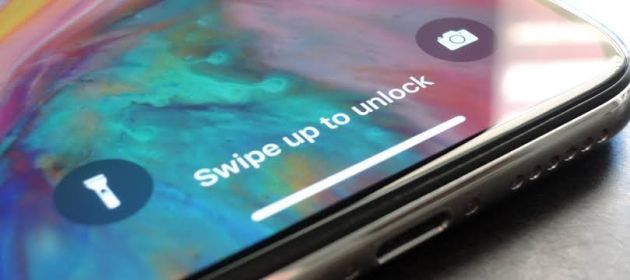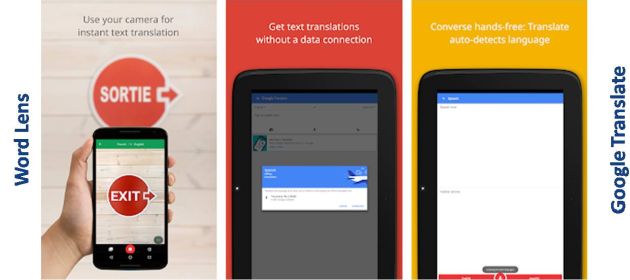In Latest Is Not Greatest, I covered four products whose new versions have omitted key features from their older versions.
- Microsoft Windows
- Lenovo Laptop
- Apple iPhone
- ATM
In this post, I’ll speculate on the causes of the “latest is not greatest” trend and how users can cope with it if their upgrades turn out to be downgrades.
CAUSES OF “LATEST IS NOT GREATEST”
As a part of my company’s outsourced product management offering, we write specifications for new / upgrades of hardware and software products. From that vantage point, I attribute the following three factors for the “latest is not greatest” trend:
#1. MINIMALISM
Many people, especially Millennials, value minimalism in many facets of their life, whether it’s furniture in their homes, their work desk, apps on their smartphone or icons on their desktop screen. It’s but natural that they’d be turned off by “bloatware” i.e. features that are used rarely.
In response, product companies are eliminating noncore features from their products.
Back in the day, they’d conduct user group surveys to find out what was core and what was noncore.
Nowadays, they use data collection tools (e.g. App Annie for mobile apps) to carry out the core versus noncore assessment internally and often conclude that features used by, say, less than 25% of the user base are noncore and unilaterally take the decision to weed them out.
Sadly, with this approach, they throw the baby out with the bathwater. Because power users constitute much less than 25% of the user base, they end up losing features that they found useful in the previous version. While Millennials are represented in the power users cohort, their choice of product is driven by minimalism and it’s too late by the time they realize the consequences of mixing up their personal preferences with their workplace choices.
"Millennials view businesses very differently from older generations & are financially challenged" ~ https://t.co/TQBVqae8rq .
If only Millennials kept their purpose BS to themselves & accepted businesses for what they're best at, they won't be so financially challenged.
— Ketharaman Swaminathan (@s_ketharaman) October 11, 2019
#2. STRIVING FOR BEAUTY AND EXPERIENCE
As a couple of Apple Insiders lamented in their article entitled How Apple Is Giving Design A Bad Name in FASTCOMPANY, Apple has sacrificed the fundamental principles of good design – discoverability, feedback, recovery, and so on – while striving for beauty.
While removing off the home button on iPhone X, Apple said that the button came in the way of an “immersive experience” in previous iPhone models.
Duh.
I have a home button on my Samsung Galaxy smartphone. I find nothing non-immersive about my experience.
Not just Fanboys, even the POTUS is with me on this!
#3. NEW STANDARDS
 In Later Version Does Not Mean Greater Features, I’d complained about lack of LED light on the RJ45 socket of my new laptop.
In Later Version Does Not Mean Greater Features, I’d complained about lack of LED light on the RJ45 socket of my new laptop.
A business associate, Mukund Chandak, recently found out that his new laptop didn’t have an RJ45 socket at all! When he inquired about this missout with the store, he was told to use the new Type-C USB port on his new laptop.
As we all know, tech is fast changing. New standards come up all the time. For a certain period, old and new peripherals coexist but, beyond a certain point, “the old order changeth, yielding place to new”, to quote Alfred Lord Tennyson.
Not just RJ45, Mukund’s new laptop also skipped HDMI and VGA, converging all old ports to to the new Type-C port.
USB-C cable can be an evil device that can destroy your devices that you want to power. Be careful while choosing the right one that does what your device needs. Watch and learn pic.twitter.com/NAY8i7qo7o
— Monica Jasuja (@jasuja) October 30, 2019
#4. NEW REVENUE SOURCE
By knocking off the audio jack on latest models of iPhone, Apple found a new source of revenue from selling Air Pods at $159 per pair.
But this strategy could backfire.
While diehard Fanboys bought Air Pods because they had no choice, I know many Fanboys who decided against upgrading their iPhones (lest they lose the audio jack during the upgrade) and some Fanboys who abandoned iPhone altogether and switched to Android.
iPhone sales are declining. Not because there are similar products at lower prices (that was always the case). But because Apple is slipping up on UX, its traditional moat. Nice to find an Apple insider echoing my thoughts.https://t.co/Et5niK9U35 via @FastCompany
— Ketharaman Swaminathan (@s_ketharaman) June 7, 2019
#5. COST CUTTING
In the ATM example mentioned at #4, the bank positioned the non printing of the receipt as a “Go Green” initiative.
But that’s a sham in my opinion.
ATMs are on 24*7*365. So are the lights and air-conditioning in ATM rooms. (For the uninitiated, “hole in the wall” ATMs are not allowed in India; by law, ATMs must be kept inside well-lit, air-conditioned rooms, with a gun-toting security guard posted outside). All that consumes a lot of electricity and leaves a huge carbon footprint. Compared to that, the ecological damage caused by the tiny paper receipt is trivial.
So, I think, this missout is just a cost cutting measure.
How I hate it when @HDFC_Bank forgets it's my bank & acts as my conscience-keeper by declining ATM receipt on the pretext of "go green".
— Ketharaman Swaminathan (@s_ketharaman) October 5, 2015
COPING WITH UPGRADES BECOMING DOWNGRADES
Hardware is proprietary and it’s difficult to do much about missouts.
This blog does not provide tech (or financial or legal) advice but I’d still not recommend drilling a hole in your new phone to get back the audio jack!
An important part of coping with upgrades turning out to be downgrades is to anticipate it. As we’ve seen, later version does not mean greater features these days.
Customers could do more detailed research to verify that key features in their existing version are available in the new version instead of assuming that they will be.
For example, when I recently bought a new smartphone, I treated audio jack as a redline. I saw around 10 models from three brands. Thankfully, most of them had the audio jack and I had a big enough choice to pick from.
But you can’t win ’em all.
While home button was also a redline feature for me, none of the above 10 models had it. I had to settle for ones that at least had a button on the right.
The best you can do in the case of hardware is to find add-on products to fill as many gaps as possible – and be prepared to eat the extra cost e.g. AirPods on iPhones without audio jack, Type-C adapter for laptops without RJ45, HDMI and VGA ports.
It’s relatively easy to plug software gaps by using third party tools, many of which are free. I use a shell software to overcome the lack of desktop and START button on the Windows 8 operating system in my new Lenovo ThinkPad.
But only relatively. I still struggle without the Windows Advanced Search mentioned in #1 above. The only alternative I’ve been able to find so far uses the command line interface and is impractical for anyone but the ultimate geeks. If any of you knows a better solution, please share it in the comments below. Thanks in advance.


